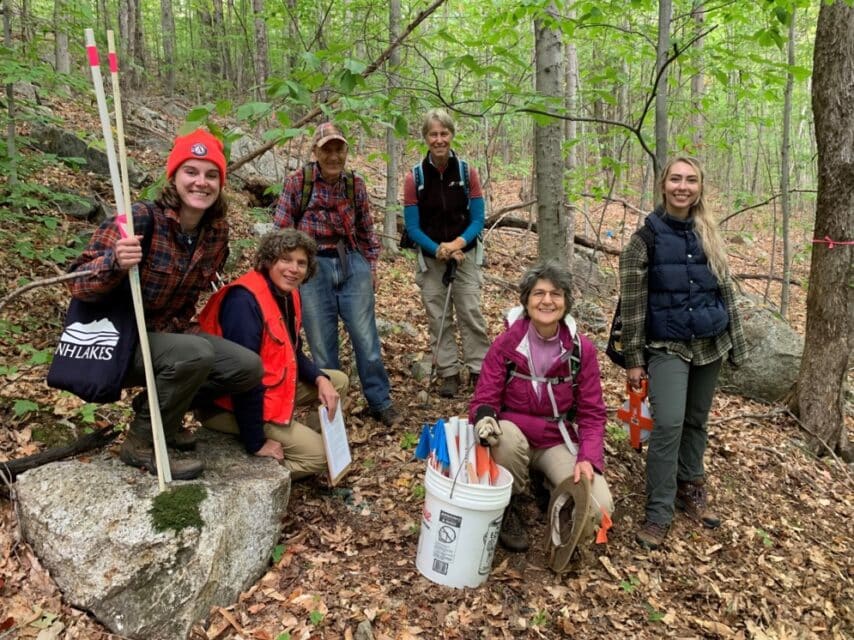
The Hubbard Brook Research Foundation and Hubbard Brook researchers are involved in a number of community partnerships to address scientific and community questions about forest ecosystems and to advance public engagement with science. Featured projects:
Sugar Maple Regeneration Community Science Project
A partnership between the Hubbard Brook Ecosystem Study and the Society for the Protection of New Hampshire Forests (aka The Forest Society)
About:
Research out of Hubbard Brook has documented a failure of sugar maple seedlings to survive, likely due to a combination of factors, including acid rain, insect and fungal pests, competition with American beech, and soil warming. The Forest Society is collaborating with Hubbard Brook scientists on a new community science project to determine whether the sugar maple seedling failure documented at Hubbard Brook is occurring on similar northern hardwood forest sites across New Hampshire. Research sites are located on Forest Society reservations across the state, currently at Kauffmann Forest (Stark), Sudrabin Forest (Orange), Yatsevitch Forest (Cornish), and Monadnock Reservation (Dublin), with additional sites to follow in subsequent years. Trained, volunteer community scientists have worked with Hubbard Brook researchers to establish study plots and collect data on tree demography, soil samples, and seedling assessment. If you are interested in becoming a community scientist volunteer for this project, please contact Carrie Deegan at cdeegan@forestsociety.org.
This project has been generously supported by USDA Northeast Climate Hub, the National Science Foundation (Long Term Ecological Research and Public Engagement with Science Grants) and Cornell University (Engaged Cornell Grant).
The Nature Conservancy Wildlife Project
A partnership between The Nature Conservancy’s New Hampshire Chapter, Vassar College, and the Hubbard Brook Research Foundation
About:
The Nature Conservancy is piloting a wildlife monitoring study in the Green Hills Preserve in the eastern White Mountains to understand four major questions: (1) What wildlife species call the Green Hills home? (2) Do these wildlife raise their young here? (3) When are wildlife most active? (4) What do these wildlife species avoid? Other species? People? Land managers with TNC are working with Dr. Lynn Christensen and Stephen Kovari to adapt their wildlife monitoring techniques from Hubbard Brook to the Green Hills Preserve. To learn more and get involved, email Jeff Lougee: jlougee@tnc.org.
